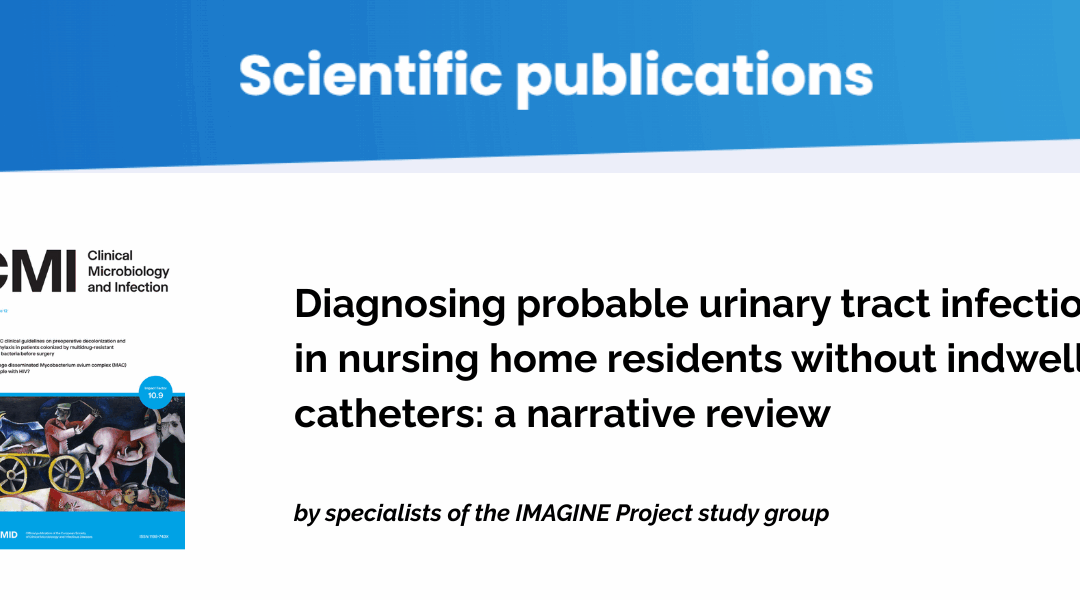Specialists of the IMAGINE Project study group published this article last December reviewing common errors in the diagnosis of urinary tract infections (UTIs) in nursing home residents. You can read the full article in the journal Clinical Microbiology and Infection (CMI) here.
In older adults, UTI symptoms are often nonspecific—such as confusion, loss of appetite, or general malaise—and asymptomatic bacteriuria (the presence of bacteria in the urine without symptoms) is very common. This frequently leads to the unnecessary use of antibiotics, which is not only ineffective but potentially harmful.
The study points out that diagnostic tools like urine dipsticks are of little value in this population. While easy to use, they have high sensitivity but low specificity, meaning that many positive results are false positives and do not warrant antibiotic treatment. Additionally, collecting urine samples can be challenging in residents with incontinence or cognitive impairment, increasing the risk of contamination and diagnostic errors.
The review also highlights that although there are multiple algorithms and clinical guidelines, many are complex or difficult to implement in daily practice. However, simple and well-defined models—such as the Loeb minimum criteria or the van Buul algorithm—offer a practical solution. These rely solely on clear clinical symptoms and avoid unnecessary testing. When applied correctly, they could help prevent between 30% and 80% of unnecessary antibiotic prescriptions, as demonstrated by several European studies in nursing homes.
Nursing staff also play a key role in the diagnostic process. They are closest to the residents, detect early changes in condition, often perform urine tests, and influence the decision to start antibiotics. For this reason, it is essential they receive specific training, have access to clear tools, and receive institutional support to make appropriate clinical decisions without relying on external pressure—from families, for example, or from the ingrained practice of “just in case” prescribing.
In conclusion, the article emphasizes that improving the management of UTIs in nursing homes requires a multifaceted strategy: staff training, discontinuation of outdated practices like dipstick use, implementation of simple clinical algorithms, and clear communication with families about when antibiotics are truly necessary. This is essential to reduce antimicrobial resistance and protect the health of a particularly vulnerable population.
Don’t miss our scientific article section — click here to explore more.

